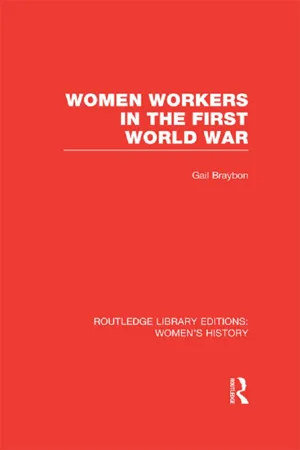History
Women of 1920s
In the 1920s, women experienced significant social and cultural changes, often referred to as the "Roaring Twenties." This era saw the rise of the flapper, a symbol of women's newfound independence and liberation. Women's roles expanded beyond the domestic sphere, with increasing participation in the workforce and the fight for suffrage, marking a transformative period in women's history.
Written by Perlego with AI-assistance
Related key terms
1 Key excerpts on "Women of 1920s"
- eBook - ePub
- Gail Braybon(Author)
- 2012(Publication Date)
- Routledge(Publisher)
8The Position of Women Workers in the Twenties
There are several ways in which one can view the effects of the First World War upon the position of women workers. Some would say that these years constituted a watershed in women’s history, and that the changes which occurred were drastic and far-reaching. Others would say that it led to few fundamental changes in the position of women in general, or of working-class women in particular. In fact, neither view is adequate. Society had not been ‘transformed’, yet many people had been changed by their war experiences, and certain aspects of industrial technology had been stimulated by the war’s requirements. In this brief look at the twenties I would like to set the war in context, and add something about the work women were offered during these years, together with some of the attitudes towards such work. This is no more than a postscript, and I have not ventured into the years of the Depression and the thirties, which belong to a different study.The entry of women into the professions, clerical work and the retail trade was almost certainly encouraged by their work in these jobs during the war, and a number of employers were happy to recruit women in these expanding fields during the twenties. For young middle-class women, employment opportunities were improving, but the position of working-class women was quite different. In 1924, the Ministry of Labour Gazette reviewed the current Report of the Factory Inspectorate:With reference to the general condition of women’s employment the Report states that the reversal of the process of substitution which was so striking a feature of war-time industry is now practically complete. Women have returned to women’s industries, and very few of them are to be found even in those sections of men’s trades for which war-time observation and experience showed them to be peculiarly well-fitted.1
Learn about this page
Index pages curate the most relevant extracts from our library of academic textbooks. They’ve been created using an in-house natural language model (NLM), each adding context and meaning to key research topics.
